Nikon Z30
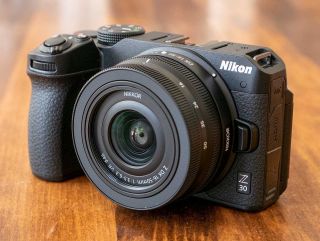
Introduction
Following the launch of their first APS-C sensor model, the Z50, the new Z30 is Nikon’s second mirrorless camera to feature this sensor size.
This new offering is aimed at vloggers and content creators looking for a lightweight, portable camera that offers better quality than their smartphone.
Despite its diminutive size, the Z30 uses the same Z lens mount as Nikon’s much larger full-frame sensor cameras, such as the Z9, Z7 II, Z6 II and Z5, which means that it can utilise the same range of Z branded FX lenses, albeit with a 1.5x crop factor applied.
In addition to the FX and three currently available DX Z-mount lenses, the existing FTZ Mount Adapter that was released with the Z6/7 models is also fully compatible with the Z30, which means that F-mount DSLR lenses can also be used with the new camera.
Key features offered by the Nikon Z30 include a 20.9 megapixel APS-C sensor, EXPEED 6 processor, 4K UHD video recording at 30p and 1080 Full HD up to 120p, both with no crop, a maximum of 125 minutes of continuous recording time, stereo microphones, fully articulating touch-screen LCD, autofocus system with 209 phase detection AF pixels, ISO range of 100-51200 that’s expandable to 20400, 11fps burst shooting with AF/AE tracking, Snapbridge, Wi-Fi and Bluetooth connectivity, and a body that weighs 350g.
The Nikon Z 30 is available now priced at £699 / $709.95 body only in the UK and USA respectively. Various kits with the DX format Z-mount lenses are also available. The Nikon Z30 is manufactured in Thailand.
Ease of Use
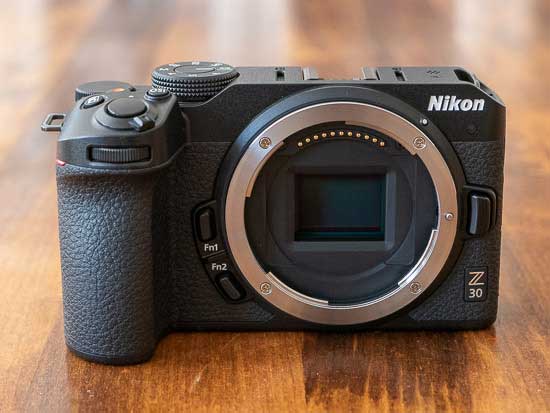 |
The introduction of the new Z30 means that there are now nine mirrorless cameras in Nikon’s camera range at the time of writing. Six of them are FX-format full-frame and three are DX-format APS-C models, with the Z30 joining the existing Z50 and Z fc cropped-sensor cameras.
In terms of how Nikon sees the Z30, it sits right at the bottom of the range underneath the Z50 and Z fc cameras in their positioning, and is currently the cheapest mirrorless camera that Nikon offer.
Nikon are hoping to tempt people to upgrade from their smartphones or their entry-level Nikon DSLRs with the new Z30, particularly those with a keen interest in vlogging and videography.
For the design of the Z30, Nikon has taken things a step further than they did for the Z50 cameras, not only miniaturizing their DSLR camera blueprint but also coming up with a new viewfinder-less design that subsequently looks more compact and sleeker than the Z50 and Z fc.
Arguing that its young, video-centric target audience won’t miss having a viewfinder, the Z30 looks just like a Z50 with the top sliced off.
It weighs in at a mere 350g body only, 45g less than the Z50, and measures 128 x 73.5 x 59.5 mm, making this a camera that you can truly carry anywhere and at all times without really noticing it.
 |
Nikon haven’t gone too far with the size reduction that the camera becomes unusable. The lovely handgrip is still relatively deep and chunky for such a small camera, while the rubberized covering around the whole camera body adds a tactile quality that belies the Z30’s entry-level price-point, as does the magnesium alloy build – this is no “plastic-fantastic’ camera.
While the Z30 doesn’t have the same levels of weatherproofing as models much further up the range, overall the build quality feels solid enough to withstand a little bit of rough and tumble as well as a variety of different weather conditions, if you take the necessary precautions to help protect it.
Control wise, as with the Z50 almost all of the Z30’s buttons are grouped on the right hand side of the camera, making one handed operation easy.
Sadly, unlike on some of the higher-end cameras, there’s no joystick which you can use to move focus points around the frame.
Instead you have to use the slower, less precise method of using the four directions on the rear d-pad to move the AF point, with a press of the OK button recentering it.
It’s also not possible to use the touch-sensitive screen to set the AF point when shooting through the viewfinder, as on some rival competitor’s models, all of which makes selecting the AF point less intuitive than it could be.
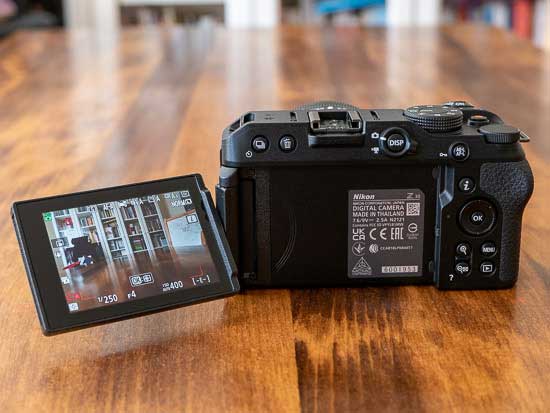 |
If you’re coming to the Z30 from a Nikon DSLR rather than a smartphone, you’ll be instantly very familiar with lots of the buttons, such as AE-L/AF-L, the Info button for accessing a quick menu.
One of the main differences between the Z30 and the Z50 is the larger than normal video-record button that is positioned on top of the Z30 for easier access in both portrait and landscape orientation.
The switch that was located on top of the Z50 for alternating between shooting video and stills has now been moved to the rear of the Z30, encircling the Display button.
To the left of the lens mount are two customisable function buttons which are useful for assigning often used settings to. A lens release button is found on the right of the mount.
Moving to the top of the Z30, you’ll find another familiarity in the shape of the mode dial. From here, you can switch between the different shooting modes that the Z30 offers, including M/A/S/P as well as fully automatic.
There’s space for three different groups of custom settings marked U1, U2 and U3, which is very handy if you often find yourself shooting in a specific kind of situation, such as low light or fast-moving subjects.
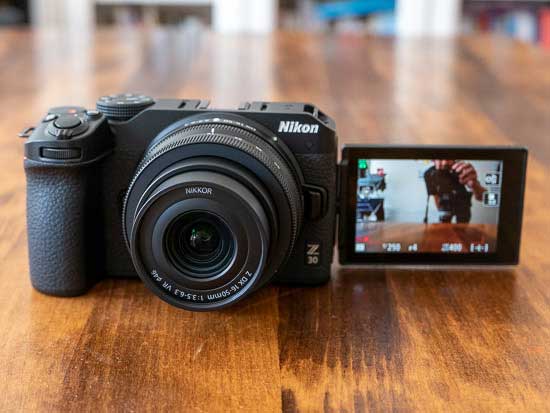 |
There’s no button in the middle of the dial which must be pressed before you can rotate the dial, as on the Z6/Z7 models, although in practice the dial proved to be stiff enough to prevent accidental mode changes when the camera is stored in a bag.
Twin electronic dials occupy the top right of the Z30 – again being very reminiscent of using a Nikon DSLR camera such as the D7300 or D5600.
They can be used together to adjust the shutter speed and aperture, depending on the particular shooting mode you’re currently in.
They can also be used to adjust other settings when holding down other buttons – for example when holding down the ISO button, the rear dial adjusts sensitivity speed, while the front dial enables and disables Auto ISO.
As well as the ISO button, next to the on/off switch you’ll also find a dedicated exposure compensation button.
The Z30 offers a better video mode than the Z50 and is definitely the one to buy if you’re predominantly a videographer.
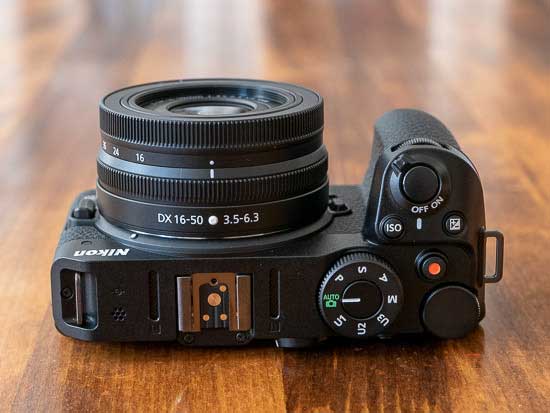 |
On its highest quality setting, the Z30 can record 4K UHD video at 30p in 8-bit. While it would have been nice to see 4K/60p or even 10-bit recording, the Z30 at least doesn’t apply any crop in the 4K mode, something that it’s main rival, the Sony ZV-E10, cannot match (it applies a 1.23x crop in 4k/30p mode).
There’s also a built-in time-lapse feature and interval timer, and Full HD slow-motion movies up to 120fps can be recorded complete with sound.
Talking of sound, the Z30 has stereo microphones located on its top plate with the option to fit a wind screen (not supplied as standard) and the option to attach an external mic. It also offers an onboard wind-noise reduction function.
Disappointingly, though, Nikon haven’t also found room for a dedicated headphone mic, something that the Sony ZV-E10 offers, so you can’t monitor the audio out in the field other than the on-screen audio level indicators.
One of the key improvements to the Z30 are much longer recording times – up to 125 minutes on the Z30 versus 30 minutes on the Z50 – although the Z30 can actually only record for approximately 35 minutes for 4K/30p.
Although there’s no in-body image stabilisation on this camera, Nikon’s electronic Vibration Reduction is available to help keep your footage nice and steady, although it applies a 1.3x crop factor to do so.
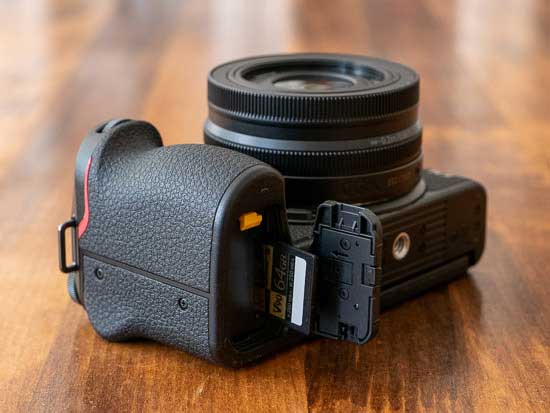 |
On the Z30 if you turn the tilting monitor to face forwards, the camera instantly engages the new Self Portrait mode, clearing the screen for an unobstructed portrait view. There’s also a handy red tally light to clearly let you know when the camera is recording.
The Z30’s new Video AF mode, which employs full-time autofocusing when recording, ideal for shooting action or first-person vlogs while on the move.
Moving to the rear of the Nikon Z30, the removal of the viewfinder means that there is only one way to compose your image – via the LCD screen.
The 3-inch, 1040K-dot touchscreen LCD is rather middle-of-the-road in terms of its specification, certainly not class-leading, but at least it is a vari-angle design that’s fully articulating to make taking selfies and vlogging a lot easier.
By contrast, the Z50 has a 180-degree flip touch-screen that’s much more suited to stills photography – this is one of the key areas of difference between the two models.
The Z30 gives you the option to change the AF point via the screen, as well as move around menus and make appropriate selections. Using the touchscreen in conjunction with the physical buttons is a great way to use the Z30, depending on how best you like to work.
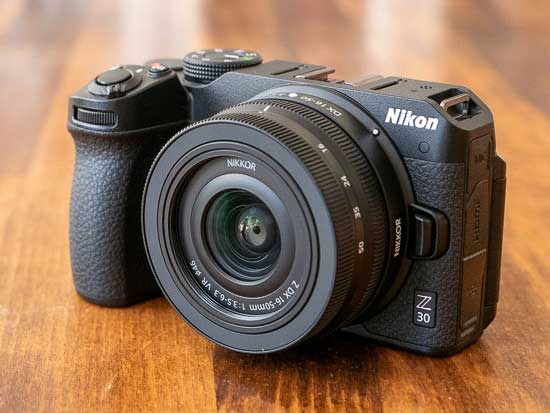 |
Nikon have also retained a great feature from the Z50 that that we’d not previously seen on any other camera before.
The Z30 has a permanent column of three controls on the right of the touchscreen. Starting from the top, there are icons for zooming in, zooming out, and toggling between the various display modes. It’s quite a neat, if somewhat limited idea, that’s meant to make the transition from a smartphone to the Z30 easier.
The familiar Nikon Quick menu can be accessed by pressing the “i” button on the rear of the Z30. In this menu you’ll find – by default – a set of commonly used settings.
You can change the options which appear in this menu though, if you find there’s another setting that you more often require quick access to.
One of the big advantages that cameras like the Z30 offer over traditional DSLRs is their ability to shoot completely silently. Certain kinds of photographers, such as wedding or sports photographers will likely find this function appealing.
Of course, it’s not new to the mirrorless market as a whole, but if you were previously a Nikon DSLR shooter before moving to the Z30, having this option may open up new some shooting opportunities.
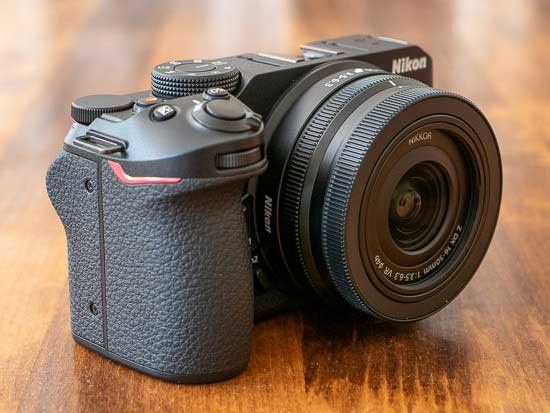 |
A key difference between the Z30 and the more expensive Z6/7-series cameras is the AF system, which as you’d perhaps expect isn’t quite as capable on the former camera.
Having said that, the Z30’s sensor still has a very respectable 209 PDAF points and the coverage is an impressive 90% both horizontally and vertically, both just like the Z50.
In practice, even when using the two slow kit lenses, the Z30’s auto-focusing doesn’t seem to be noticeably more sluggish in the majority of shooting situations than the Z6/Z7.
It locks on pretty much instantaneously for static subjects in good light, while in low light, focusing is a little slower, but not unacceptably slow, with the Z30 capable of focusing down to an impressive -4EV. The same capable Eye AF system as found in the Z6/7 is also onboard.
The Nikon Z30 camera can shoot at 11fps, which is actually faster than the max 9fps that the Z7 can muster and only marginally slower than the Z6′ 12fps.
It performs best when attempting to keep the subject under an active AF point (using Single-Point AF or Wide-Area AF), rather than activating the tracking focus.
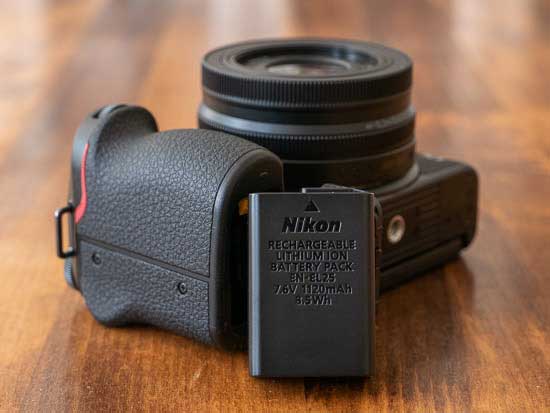 |
Both Wi-Fi and Bluetooth connectivity are included, primarily designed for use with Nikon’s Snapseed app.
After some early teething issues, on the whole using the app is a much more pleasant experience than when it first appeared a few years ago.
You can use it to automatically send files over to your phone for sharing online, which is useful for social media aficionados.
As it is aimed squarely at consumers than professionals, there’s just a single memory card slot on the Z30 which supports the ubiquitous SD format.
Rather annoyingly for this kind of camera, though, the card slot is in the same compartment as the battery on the bottom of the camera, rather than in a dedicated compartment on the side.
At the time of writing, there are only three DX format, Z mount lenses for the Z30. They are the NIKKOR Z DX 16-50mm f/3.5-6.3 VR. the NIKKOR Z DX 30-230mm f/4.5-6.3 VR and the NIKKOR Z DX 18-140mm f/3.5-6.3 VR.
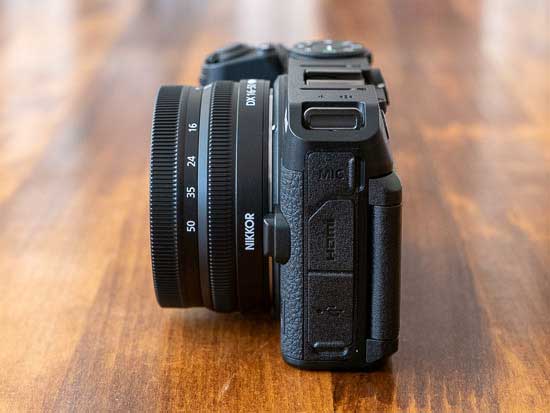 |
While we expect Nikon to bring more to the market during the next months and years, for the time being the lack of available lenses are the main weakness of buying into the Z30 system.

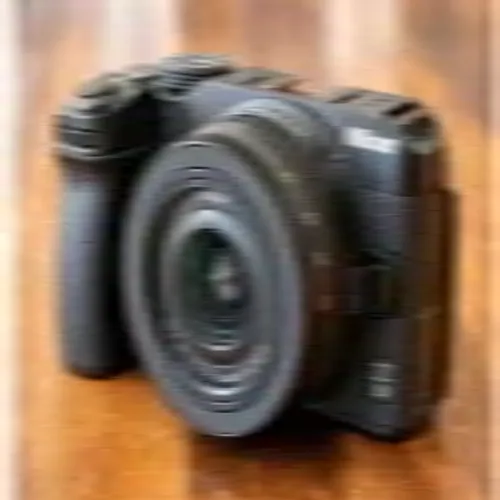
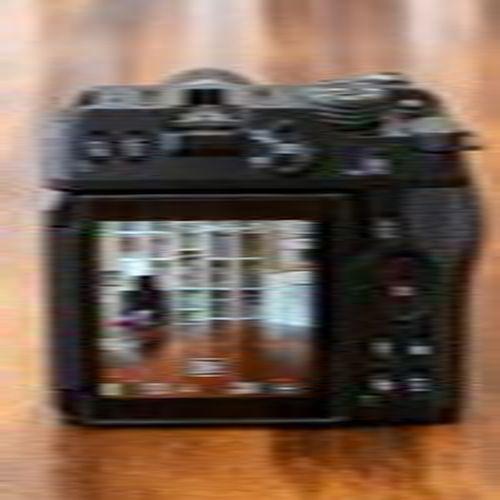
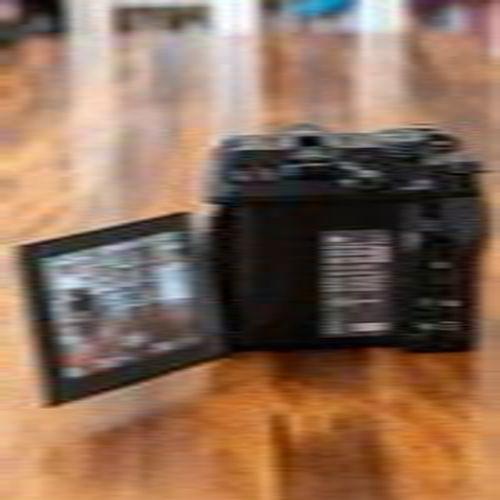
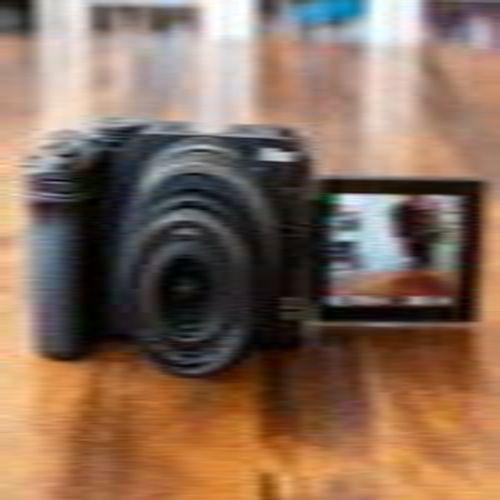
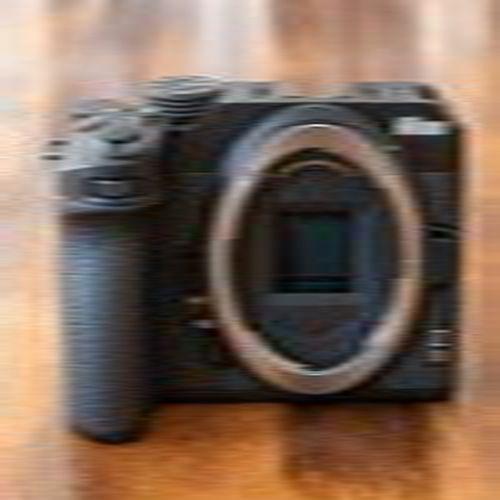
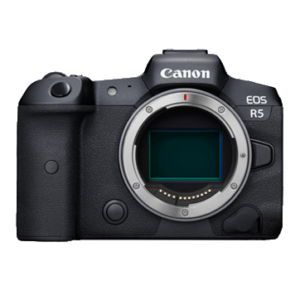

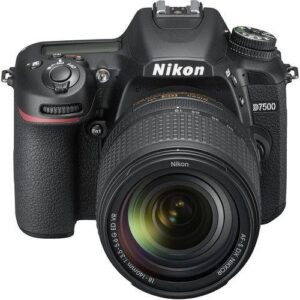
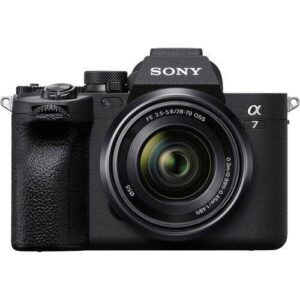
Reviews
There are no reviews yet.